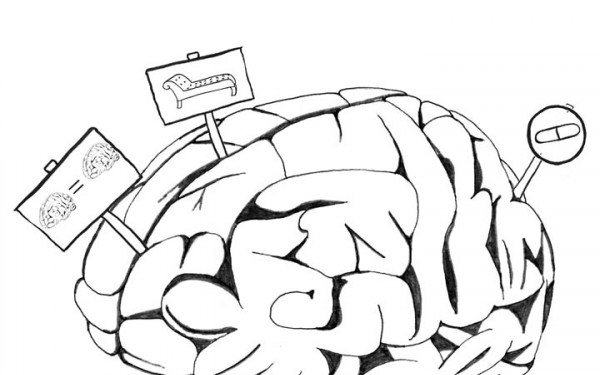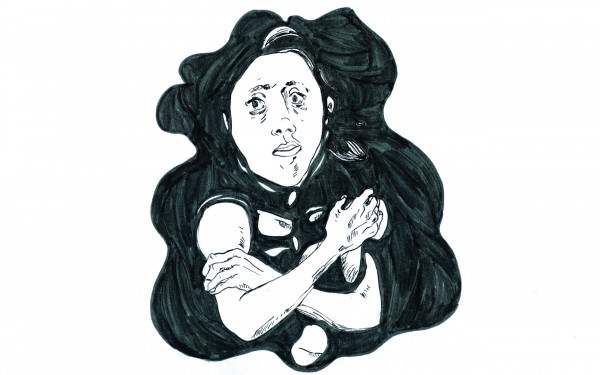Mental Squeeze
Discussing Mental Illness and Medical Stigma
As someone who has suffered from anxiety my whole life, in the last few years of high school, I took a step towards dealing with it.
With the support of my doctor and psychologist, I began taking medication—Prozac, to be specific. I lovingly referred to it as a “miracle worker” for years, and still do today.
After almost four years, the day came when I thought I was ready to stop using the drug and deal with my anxiety on my own. Suddenly, there was a drastic change in the way my doctor treated me. When I expressed concerns about my physical health, they were dismissed, taking a backseat to my anxiety levels. I felt I wasn’t being taken seriously.
Mental illness, sometimes considered an “invisible disability,” is stigmatized, but you already knew that. You also know that from social interactions to the workplace, mental illness leaves its mark on people in any number of ways—one of those ways is through the medical field.
This new pattern of dismissing physical health concerns because of a mental health diagnosis is disturbing, to say the least. I’ve come to realize that I’m not the only one who feels they were or are not being taken seriously.
In 2013, the American Psychiatric Association published the Diagnostic and Statistical Manual of Mental Disorders, also known as DSM-5. It is the standard classification of mental disorders for doctors in the United States. It also contains criteria for diagnosis of all known psychiatric disorders.
The changes that DSM-5 has brought about have been heavily criticized. Allen J. Francis, M.D. said that two major issues that come from these changes are encouraging dismissal of medical symptoms as “all in the head” and mislabelling physical medical symptoms as mental disorders.
Francis cited UK health advocate Suzy Chapman, who monitored the development of DSM-5, and wrote a strong critique on how DSM-5 could go horribly wrong.
Chapman wrote that there was a proposal to rename the Somatoform Disorders section of the previous manual and replace it with a new category, ‘Somatic Symptom Disorder,’ omitting the pluralization.
Somatic symptoms are symptoms related to the body. William R. Yates, M.D. explained that Somatic Symptom Disorders, “represent[s] a group of disorders characterized by thoughts, feelings, or behaviors related to somatic symptoms.”
He explained that these disorders challenge medical providers, because certain mental illnesses, such as mood and anxiety disorders, produce physical symptoms and a doctor must search for psychological factors before a medical diagnosis can be made. These sorts of disorders are more prevalent in women and can develop at any age.
To fall into the newly created category, the patient would have to show evidence of one or more distressing or disrupting somatic symptoms and have excessive thoughts, feeling or behaviors about these symptoms. These symptoms would also have to be persistent.
With the changes that DSM-5 is implementing, what this all boils down to is that this category will become widely generalized, and could result in a mental health diagnosis being applied to all illnesses.
According to Chapman, this will lead to stigma, missed diagnoses and the prescription of inappropriate drugs.
This whole discussion is even more important, considering that most people with mental illnesses have a heightened risk of illnesses that impact the body. The Mood Disorder Society of Canada reported that people with depression were 2.6 times more at risk for strokes, 4 to 6 times for epilepsy and 1.35-1.88 times for cancer.
I asked Concordia student Judith Dicaire about her experiences with mental health reception in the medical field. She explained to me that due to strange period cycles, she went to her doctor to voice her concerns.
“I told my doctor how I think that maybe the birth control pill wasn’t the right option for me, because it messed up my anxiety and my hormones,” Dicaire said. “She said, ‘stop looking for reasons to have anxiety and inventing problems.’”
Dicaire then explained how she went to another doctor, who was not aware of her history of anxiety, and was given a completely different response.
“She told me exactly what I thought it was,” Dicaire said.
Suffering from anxiety is not fun, to say the least, but to not be taken seriously by your medical practitioner because of it isn’t just insulting—it’s downright scary. I don’t want to be thrown into a general category and stamped with a label like some kind of UPS package. I want my needs and concerns to be taken with gravity and dealt with appropriately.
Graduate student Navi Dhanota recently won a case for a complaint she filed with the Ontario Human Rights Tribunal in 2013, when York University denied her academic accommodations because she refused to disclose her diagnosis. Now, students must provide documentation about their disability, but are no longer required to specify the nature of the illness.
“Even if one student would be reluctant to seek support from our disability services because they didn’t want to disclose their diagnosis, we want to eliminate that barrier,” Marc Wilchesky, one of the professors involved with the movement, told Maclean’s.
As more and more students with “invisible disabilities” receive the help and the confidence to pursue higher education, it is becoming clear that the school mentality is evolving.
Aliçia Raimundo, with the overwhelming support from a school counsellor, experienced a turning point in her battle with mental illness while attending the University of Waterloo. Having not pursued accommodations due to fear of stigma, she told Maclean’s she wishes that people would understand that “students can live without [accommodations], but it makes life a lot harder.” She also has a message for her fellow students.
“Know what exists on your campus before you go, where your allies will be,” Raimundo said. “Find those people like you who have struggled. Knowing that you’re not alone is such an important part of this.”
Mental illness is not something to be ashamed of, and it does not warrant that we be packaged into a common box or ignored by our doctors. We will get the understanding and support that we need.
We need to continue fighting and ensure that we don’t stay invisible.


_600_832_s.png)




